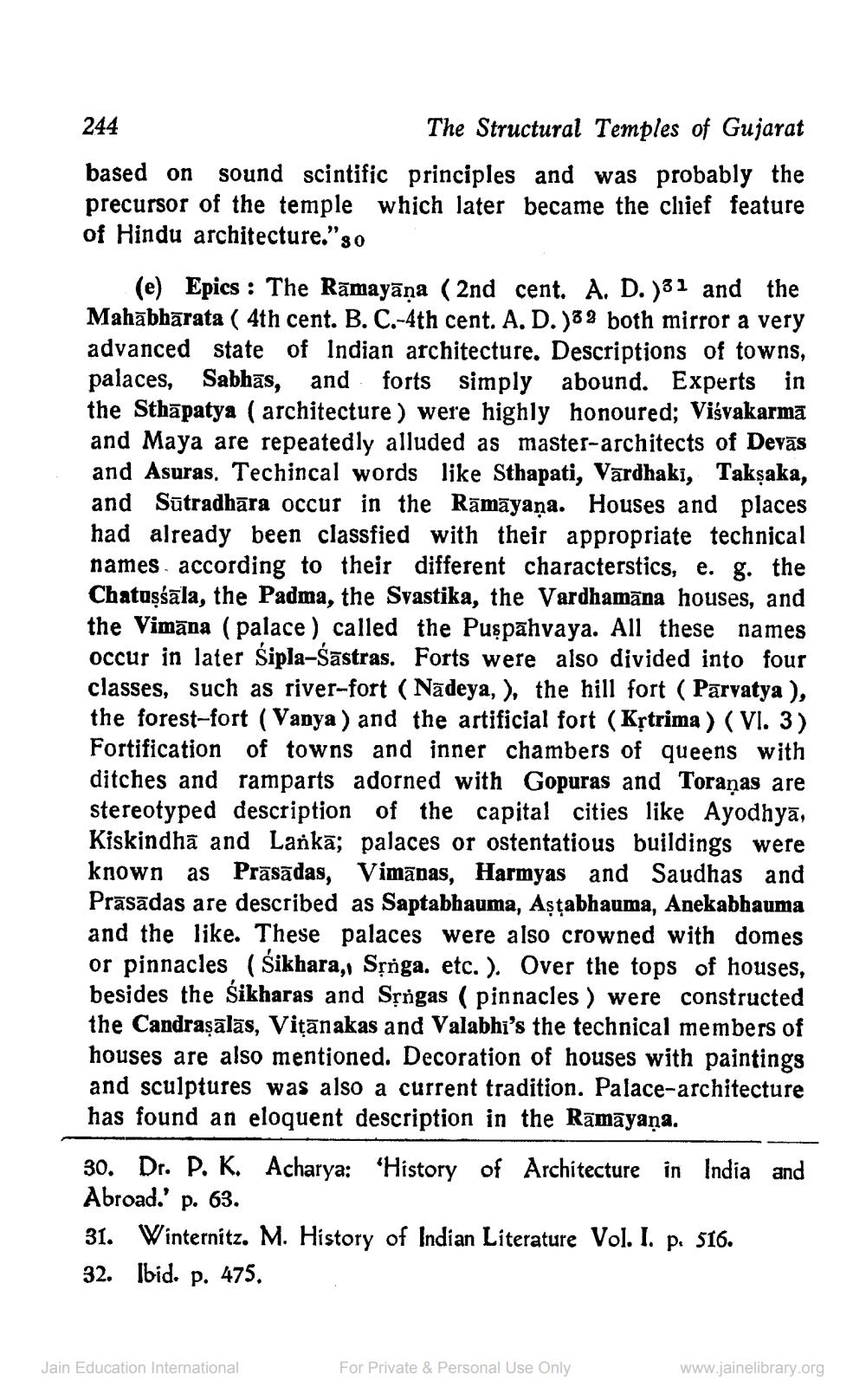________________
244
The Structural Temples of Gujarat based on sound scintific principles and was probably the precursor of the temple which later became the chief feature of Hindu architecture."80
(e) Epics : The Ramayāṇa (2nd cent. A. D.)31 and the Mahābhārata ( 4th cent. B. C.-4th cent. A. D.)32 both mirror a very advanced state of Indian architecture. Descriptions of towns, palaces, Sabhās, and forts simply abound. Experts in the Sthāpatya ( architecture) were highly honoured; Viśvakarmā and Maya are repeatedly alluded as master-architects of Devās and Asuras. Techincal words like Sthapati, Vārdhaki, Takşaka, and Sūtradhāra occur in the Rāmāyaṇa. Houses and places had already been classfied with their appropriate technical names, according to their different characterstics, e. g. the Chatuşśāla, the Padma, the Svastika, the Vardhamāna houses, and the Vimāna (palace) called the Puspahvaya. All these names occur in later Šipla-Šāstras. Forts were also divided into four classes, such as river-fort (Nādeya, ), the hill fort ( Parvatya ), the forest-fort (Vanya) and the artificial fort (Kștrima) (VI. 3) Fortification of towns and inner chambers of queens with ditches and ramparts adorned with Gopuras and Toraņas are stereotyped description of the capital cities like Ayodhyā, Kiskindhā and Lankā; palaces or ostentatious buildings were known as Prāsādas, Vimāpas, Harmyas and Saudhas and Prāsādas are described as Saptabhauma, Așțabhauma, Anekabhauma and the like. These palaces were also crowned with domes or pinnacles (Śikhara, Sțrga. etc. ). Over the tops of houses, besides the śikharas and Srogas (pinnacles ) were constructed the Candraşālās, Viļānakas and Valabhi's the technical members of houses are also mentioned. Decoration of houses with paintings and sculptures was also a current tradition. Palace-architecture has found an eloquent description in the Rāmāyaṇa. 30. Dr. P. K. Acharya: "History of Architecture in India and Abroad.' p. 63. 31. Winternitz. M. History of Indian Literature Vol. I. p. 516. 32. Ibid. p. 475.
Jain Education International
For Private & Personal Use Only
www.jainelibrary.org




